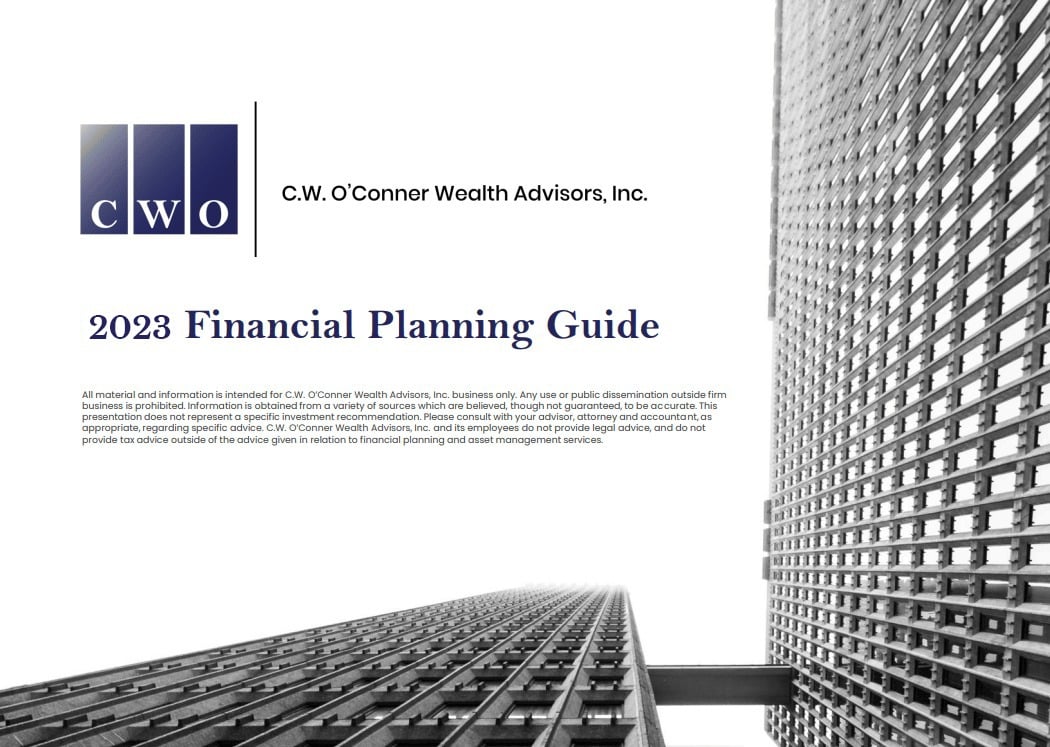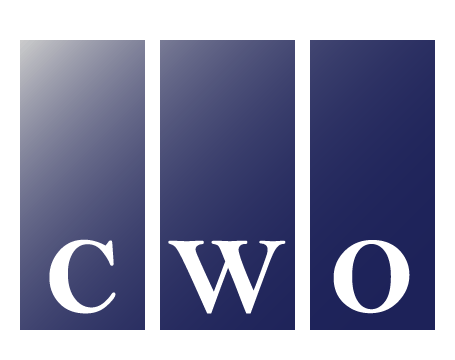
Qualified charitable distributions (QCDs) are a popular way for individuals with an individual retirement account (IRA) to support charitable organizations while also limiting their overall tax liability. However, like any financial giving tool, QCDs come with their own set of pros and cons and their viability depends on your unique circumstances.
In this article, you’ll get a comprehensive perspective on QCDs. You’ll learn what they are, how they work, what benefits they provide, what drawbacks they have, and what rules you’ll have to adhere to when using them. You’ll also be provided with actionable steps to use QCDs yourself should you decide the strategy may be right for you.
What is a Qualified Charitable Distribution (QCD)?
A qualified charitable distribution (QCD) is a transfer of money made directly to an eligible charitable organization from a qualifying individual retirement account (IRA). They allow individuals to donate to the causes they support while simultaneously having such donations excluded from their taxable income.
QCDs are often a critical component of a financially savvy gifting strategy. That said, QCDs can be complex as they must adhere to a variety of rules and procedures to work properly.
How Do Qualified Charitable Distributions Work?
QCDs have to follow strict rules and procedures to work as intended. This will require you to ensure your distribution follows the governing regulations, your charity is recognized as an eligible 501(c)(3) organization by the IRS, and that you’ve completed the proper documentation for tax reporting purposes.
Table of Contents
- 0.0.1 Rules your QCD must adhere to include:
- 0.0.2 Benefits of QCDs
- 0.0.3 Drawbacks of QCDs
- 0.0.4 1. How Much Can I Donate Through a QCD?
- 0.0.5 2. Do Qualified Charitable Distributions Count Toward RMDs?
- 0.0.6 3. Are Qualified Charitable Distributions Taxable?
- 0.0.7 4. Do Churches Qualify for QCDs?
- 0.0.8 5. Can I Make a QCD From an Inherited IRA?
- 0.0.9 6. Can a QCD Go to a Donor-Advised Fund?
- 0.0.10 7. QCD vs Donor Advised Fund: What’s the Difference?
- 0.0.11 8. How Is a QCD Reported on Form 1099-r?
- 1 Download our 2023 Financial Planning Guide
Rules your QCD must adhere to include:
- QCDs can only be made by individual retirement account (IRA) owners who are at least 70 ½ years old.
- QCDs must be made to a qualifying charity directly from a qualifying IRA.
- QCDs have a maximum limit of $100,000 per year.
- QCDs are properly reported via Form 1099-R on your tax return.
If these rules are abided by, your QCD will allow you to donate to charitable organizations of your choosing with the distribution amount being excluded from your taxable income. Additionally, your QCDs can also count toward your required minimum distribution (RMD) amount. This is the amount you’re required to begin withdrawing depending on the type of your IRA after age 73.
Please Note: The $100,000 annual maximum for QCDs will begin being indexed for inflation each year starting in 2024.
Qualified Charitable Distribution (QCD) Benefits and Drawbacks
Qualified charitable distributions (QCDs) can certainly be appealing based on your individual circumstances. However, like all financial strategies, both the benefits and the drawbacks need to be considered before making a decision.
Benefits of QCDs
Benefits of qualified charitable distributions (QCDs) include:
Tax-Free Donations: QCDs go straight from your individual retirement account to support qualifying charitable organizations. The distributions are not included in your taxable income, which allows for tax-free giving up to the $100,000 threshold each year.
Lower Adjusted Gross Income (AGI): Since QCDs are excluded from your taxable income, they may be used to lower your AGI. This could translate to further tax savings when it comes time to file.
Satisfy Required Minimum Distributions (RMDs): If your individual retirement account (IRA) is subject to RMDs, you’ll be required to make minimum withdrawals from your account after reaching age 73. Thankfully, however, QCDs can count towards your RMD obligations.
Less Expensive Medicare Premiums: Medicare premiums are derived from your modified adjusted gross income (MAGI). Since QCDs can lower your adjusted gross income (AGI), they may also be able to lower your Medicare premium expenses by extension.
Avoid Limits of Itemized Deductions: QCDs are not required to be included in itemized deductions on your tax return. This means you can give to the qualifying charitable organization(s) of your choice while still claiming the standard deduction on your tax return.
Drawbacks of QCDs
Drawbacks of qualified charitable distributions (QCDs) include:
Age Restrictions: QCDs are only available to IRA owners age 70 ½ or older.
Limited Compatibility: QCDs can only be made from eligible individual retirement accounts (IRAs) such as traditional IRAs, SIMPLE IRAs, and SEP-IRAs. Other retirement accounts like 401(k)s and 403(b)s do not qualify.
Eligibility Requirements for Charities: QCDs can only go towards qualifying 501(c)(3) organizations. Distributions may not go to non-qualifying charities or other entities such as donor-advised funds or private foundations.
No Double Tax Benefit: If you make a QCD with a tax exclusion, you cannot also claim the charitable donation as an itemized deduction on your personal tax return.
Annual Limit: QCDs may not exceed $100,000 in a year.
Complexities: To make a QCD properly, you’ll need to properly coordinate with your IRA custodian and make sure you adhere to all governing regulations and procedures. Additionally, to claim the tax benefits of your QCD, you’ll have to fill out the proper paperwork and ensure it’s provided to the appropriate parties.
Qualified Charitable Distributions FAQs
1. How Much Can I Donate Through a QCD?
You can donate up to $100,000 per year in qualified charitable distributions with a QCD. If you’re looking to exceed this amount, look into other estate planning tools and gifting strategies. You may find additional vehicles such as private foundations, donor-advised funds, or supporting organizations to be suitable supplements to your QCD strategy.
2. Do Qualified Charitable Distributions Count Toward RMDs?
Qualified charitable distributions (QCDs) do count towards your required minimum distributions (RMDs). RMDs are mandatory withdrawals you must begin taking from your individual retirement account (IRA) after reaching age 73.
However, by using QCDs, you’re able to meet the RMD requirements while keeping the distributed amount out of your taxable income. Using QCDs can be a great strategy for those looking to give to charity and save on taxes.
Please Note: The SECURE Act 2.0 is set to raise the RMD age to 75 in the year 2033.
3. Are Qualified Charitable Distributions Taxable?
Qualified charitable distributions (QCDs) are excluded from your taxable income. This offers a significant tax advantage. Your QCD allows you to make tax-free contributions to an eligible charitable organization you support while potentially lowering your adjusted gross income (AGI), which can result in noticeable savings come tax time.
Please Note: When you take advantage of the tax exclusion offered by a QCD, you can not also claim the distribution as an itemized deduction on your personal return.
4. Do Churches Qualify for QCDs?
Churches are usually eligible for QCDs. They just have to meet the necessary 501(c)(3) tax-exempt status in the eyes of the IRS. Before making your QCD to a church, make sure the organization meets this requirement.
5. Can I Make a QCD From an Inherited IRA?
You can make a QCD from an inherited IRA. However, you must still meet the minimum age requirement of being at least 70 ½ years old.
6. Can a QCD Go to a Donor-Advised Fund?
QCDs cannot go to a donor-advised fund (DAF). While QCDs and DAFs are both used as strategies for supporting charities, they have different governing rules and tax implications. QCDs must go directly to a qualifying 501(c)(3) organization. DAFs, on the other hand, are separate philanthropic entities managed by a sponsoring organization.
7. QCD vs Donor Advised Fund: What’s the Difference?
The key differences between QCDs and donor-advised funds (DAFs) lie within their structure and tax advantages. A QCD makes a direct transfer of funds from an individual retirement account (IRA) to a qualifying 501(c)(3) organization. IRA owners can use QCDs to satisfy their required minimum distribution (RMD) requirements and give to charities tax-free.
In contrast, DAFs are entirely separate philanthropic accounts. DAFs are managed by third parties known as “sponsoring organizations” where a donor (i.e. you) is able to donate money that’s tax deductible, and recommend that grants be given to qualifying charities over time.
8. How Is a QCD Reported on Form 1099-r?
Qualified charitable distributions (QCDs) are reported on a Form 1099-R, which is issued by your IRA provider. Your full distribution amount is reported in Box 1, while the taxable portion of your distribution is reported in Box 2a. The difference between the amount in Box 1 and Box 2a will show the amount of your QCD. Make sure to speak to a tax professional to ensure reporting is accurate on your tax return.
How to Set Up A Qualified Charitable Distribution
Qualified charitable distributions (QCDs) can be complex. They entail multiple steps and strict regulations to be properly leveraged. Below, we’ve provided a step-by-step guide to walk you through the process:
Step 1) Check Your QCD Eligibility: To utilize a QCD, you must be the owner of a qualifying individual retirement account (IRA) and be at least 70 ½ years old. You can always contact your IRA provider or your financial advisor to check your eligibility.
Step 2) Select an Eligible Charity: QCDs can only be made to qualifying organizations. Charities must meet the 501(c)(3) tax-exempt status in the eyes of the IRS. Make sure the organizations you’re looking to support meet this status requirement.
Step 3) Decide On Distribution Amounts: Figure out how much you would like to donate to your qualifying charitable organization(s). However, keep in mind, QCDs have an annual maximum of $100,000.
Step 4) Contact Your IRA Custodian: Reach out to your retirement account provider and let them know you’re looking to make a QCD. They will likely have specific forms and procedures in place to process your request.
Step 5) Provide Your Charity’s Information: Provide your IRA custodian with the necessary information regarding your charity. This typically includes the organization’s official name, address, and tax identification number (EIN).
Step 6) Request Your Funds to be Transferred: Instruct your IRA custodian to transfer your desired QCD amount directly to your qualifying charity organization.
Step 7) Obtain Proper Documentation: After your QCD has been made, request an acknowledgement letter from the charity organization that confirms your donation. This documentation will be required for tax reporting purposes.
Step 8) Track Your QCDs: Keep accurate records of your total QCD amounts throughout the year. This is especially important if you make multiple QCDs. Make sure you do not exceed the annual $100,000 threshold.
Step 9) Report Your QCD On Your Tax Return: Your IRA custodian will provide you with a Form 1099-R. Get together with a tax professional and ensure your QCDs are accurately reported, and that your distributions are exempted from your taxable income.
How CW O’Conner Can Help You Further
At CW O’Conner, we recognize how powerful qualified charitable distributions (QCDs) can be as part of your overall giving strategy. That’s why we help clients incorporate them alongside other gifting tools to help them have a significant impact on the causes they care about.
As your financial support team, we’ll be able to help you navigate the complexities of QCDs. We’ll help you in determining if they make sense. We’ll also help you evaluate other strategies that can be used to supplement your QCD giving.
If you’re interested to learn more about QCDs or are interested in taking advantage of them yourself, please don’t hesitate to reach out. You can call us directly at 770-368-9919, or fill out a contact card, and we’ll reach out to you.
The opinions and analysis expressed herein are based on C.W. O’Conner Wealth Advisors, Inc. research and professional experience and are expressed as of the date of this report. Please consult with your advisor, attorney and accountant, as appropriate, regarding specific advice.
Download our 2023 Financial Planning Guide







